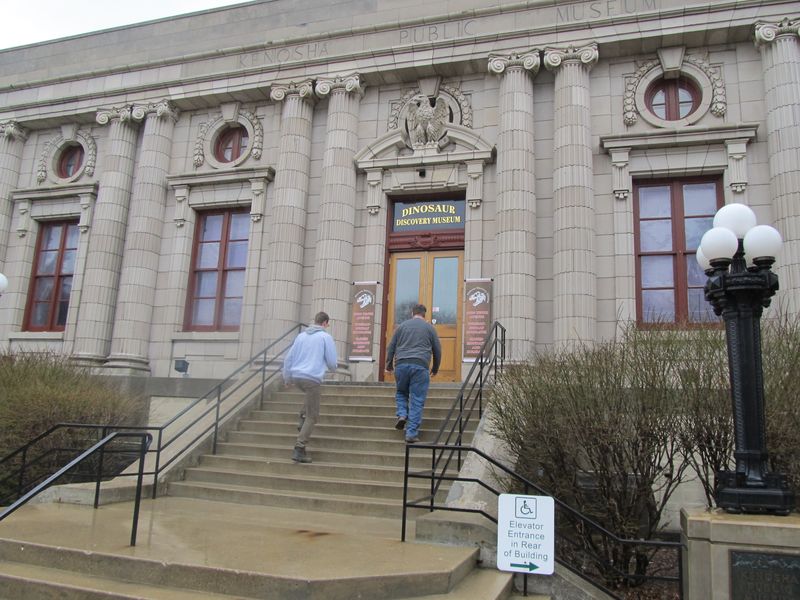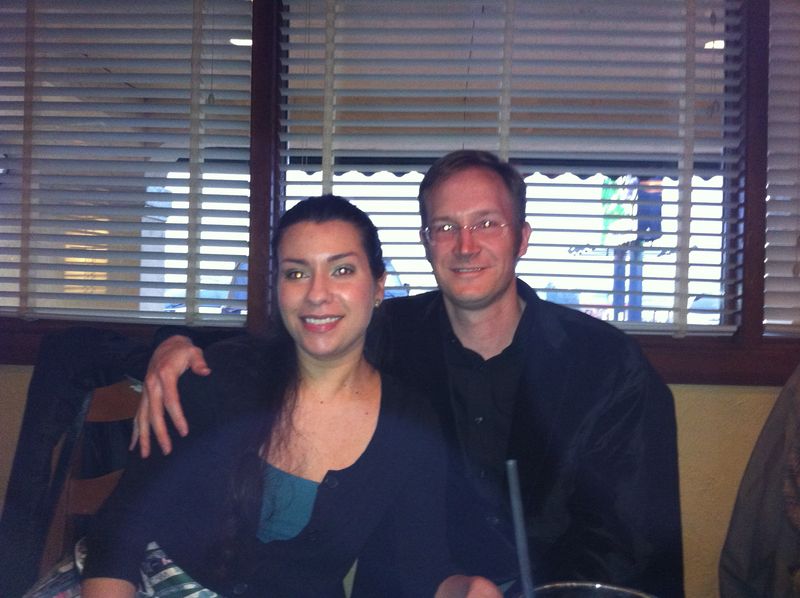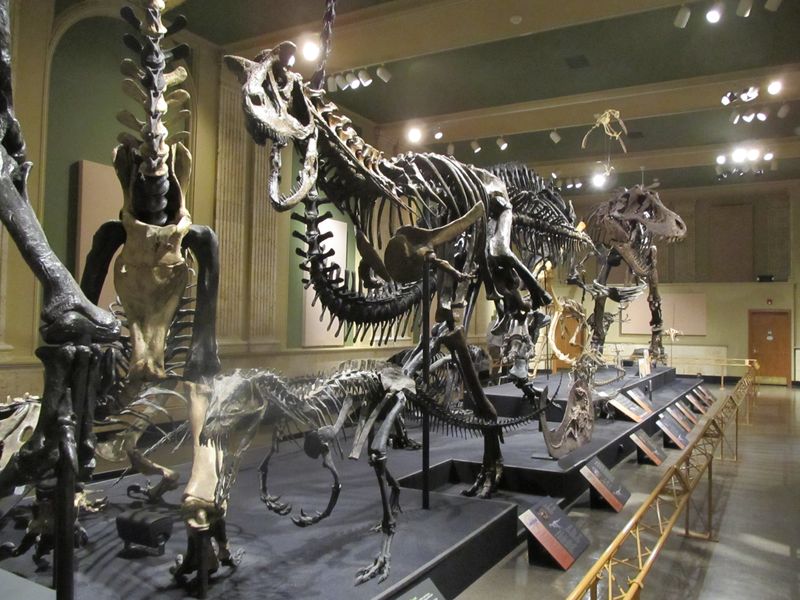By Mary Fairchild
Last week, we had the pleasure of dining with Thomas Carr and his wife Belinda prior the ESCONI general meeting where we were delighted to hear him speak on his important work at Carthage.
“‘Dinosaurs Decoded” premiered Oct. 11, 2009, on the National Geographic Channel. The documentary features Prof. Carr, a vertebrate paleontologist and expert on tyrannosaurid dinosaurs, along with other famed paleontologists. The scientists compare how juvenile dinosaur skeletons differ from those of their adult counterparts.”
“‘It is about how Triceratops and T. rex grew up,” says Prof. Carr. “The differences between little dinosaurs when they’re young and big ones when they’re grown up are so great that they’re often mistaken for different species. But as new fossils are found, the gaps get filled in, and it becomes clear that there’s an unbroken transition from the little ones to the big ones in terms of how their faces change.'” (3)
Dr. Carr holds a Ph.D. in Vertebrate Paleontology, Department of Zoology, University of Toronto, a M. in Science from the University of Toronto, and a B.A. from York University (York, Ontario). He is the Senior Scientific Advisor of the Dinosaur Discovery Museum and an Associate Professor of Biology at Carthage College in Kenosha, Wisconsin.
His research interests include the integration of ontogenic and phylogenetic data in paleontology, phylogeny and historical biogeography of Laurasian dinosaurs, and the craniofacial anatomy of archosaurs. He has been featured on the National Geographic Channel, and has named four new dinosaur species in peer-reviewed publications such as Journal of Vertebrate Paleontology and Proceedings of the National Academy of Sciences. Every summer he leads an annual month-long dinosaur-hunting expedition in southeastern Montana, in which Carthage students are involved. (2)
 The historic Kenosha Post Office is now the Dinosaur Discovery Museum. The Carthage Institute of Paleontology is housed in the Museum, and it is dedicated to the preparation and conservation of real dinosaur fossils.
The historic Kenosha Post Office is now the Dinosaur Discovery Museum. The Carthage Institute of Paleontology is housed in the Museum, and it is dedicated to the preparation and conservation of real dinosaur fossils.
This is their newest theropod, Carnotaurus or “flesh eating bull.” It is the Dinosaur Discovery Museum’s newest arrival and is 25 feet long and 6-1/2 feet tall at the hips. The almost-complete fossilized skeleton was found in Patagonia, Argentina.
The Dinosaur Discovery Museum exhibit gallery has more meat-eating dinosaurs on display than any other museum in the nation. Nine of the dinosaurs can be seen only at our Museum. The dinosaur skeletons in the main gallery are casts of actual dinosaur fossil bones. At a glance, visitors will know the completeness of the original skeletons: the lighter bones are casts of actual fossil bones, and the black bones indicate those missing from the original skeletons but sculpted to replace them. Each dinosaur is labeled, providing detailed information about each species.
On the lower level of the museum you will find the Carthage College Institute of Paleontology. What you see behind the windows of the lab are the actual dinosaur fossil bones of Little Clint, a juvenile T-rex. The fossils were collected during the 2006 and 2007 Field School in the Hell Creek Formation of southeastern Montana.
References
- Dinosaur Discovery Museum, 5608 Tenth Ave., Kenosha, WI, 51340 (262-653-4450).
- Carthage College
- Carthage College, “Dinosaurs Decoded.”


